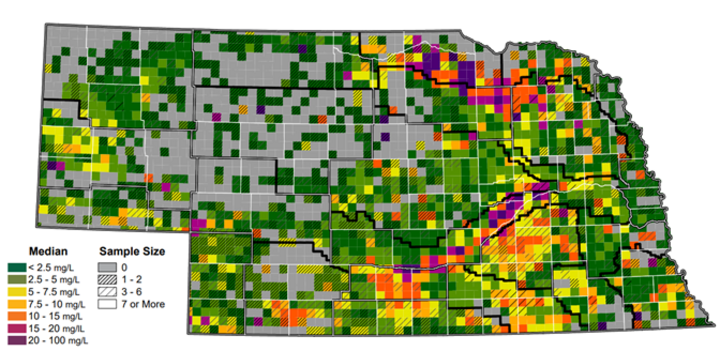The Five Things Every Livestock Farmer Should Know About Biosecurity

Let’s start by answering the question, What exactly is “biosecurity”? This is probably not a term that you are hearing for the first time. But, maybe it is something you have not thought about recently, or perhaps you have new employees who are not familiar with the concept. By definition, biosecurity refers to all of the practices implemented to keep diseases and disease-causing organisms away from a population of livestock or poultry. To me, having a biosecurity plan for your farm is kind of like teaching kids healthy habits to keep them from getting sick. I have school-aged kids, so I am always dealing with colds and coughs that they pick up from friends. I tell my kids to cover their mouth when they cough and to wash their hands with soap after using the restroom, blowing their nose or spending time around a lot of people. I hope that other parents are doing the same with their kids and, like me, will keep their kids home when they are sick to prevent spreading their illness. After all, one of the best ways to avoid getting sick is to avoid having contact with people who are sick and the items they have touched, right?
The same is true for animals. So, anytime livestock have contact with each other or with people who have been around other animals, the opportunity exists for diseases to be spread. Since we cannot tell animals to cover their cough, wash their hooves frequently, or stay home when they are sick to avoid spreading germs, we depend on biosecurity practices that can be employed on the farm to keep animals healthy.
Here are five facts about biosecurity that every livestock farmer should know.
 Fact #1. If it moves, it can carry diseases.
Fact #1. If it moves, it can carry diseases.

For this reason, biosecurity plans and actions need to encompass more than just the animals on the farm and the people working with them on a day-to-day basis. Trucks and their drivers, handling facilities and equipment, employee vehicles, farm equipment, and clothing and boots can all carry disease-causing organisms. Thoroughly washing surfaces to remove caked on manure, mud or other materials, disinfecting, drying and exposure to sunlight are all steps that can eliminate or reduce the amount of infectious agents on surfaces.
Fact #2. A person can be a vector for an animal disease even if the disease is not zoonotic.
Zoonotic diseases are infectious diseases that can be spread between animals and humans. Examples of zoonotic diseases include ringworm, brucellosis, influenza, and salmonellosis, among others. One example of a non-zoonotic disease that many swine producers are, unfortunately, aware of is porcine epidemic diarrhea virus, or PEDv. While humans cannot become sickened by the PED virus, they can transmit the disease by carrying manure from infected animals on their shoes, boots or clothing. Oftentimes, producers will require that a person not have contact with any other livestock within 24 or 48 hours of coming to their farm. Changing clothing or boots, using boot washes, and even just washing hands are other ways to control disease spread on your farm.
Fact #3. Man’s best friend can be an unwelcome companion on the farm.
Faithful dogs – as well as cats and other domestic pets – have been known to follow their humans everywhere they go. Just like with people, these animals can carry disease-causing organisms – like PEDv – even though they cannot be sickened by them. Being mindful of where pets are allowed access on the farm can help identify potential risks for disease transmission by our faithful companions.
Fact #4. Limiting traffic on the farm is one of the best measures for ensuring biosecurity.
A single entry point to the farm can help you keep an eye on who is coming into and out of the site. Posting signs to let the public know that they are entering a livestock farm where biosecurity practices are in place is recommended. For visitors that must enter the farm, it is important that they know where to find the main office so that they can sign in and be instructed on biosecurity practices while on the farm. If they will be entering livestock confinement facilities, clothes and boots should be provided for them to wear while on-site and leave behind when their visit is complete. Shower facilities are often provided on swine farms to allow visitors to shower in and shower out when entering and exiting facilities. It is critical, though, to make sure visitors know that NOTHING should pass through the shower facilities with them. Clothing provided after showering into a barn should be worn until the person prepares to leave, at which time those clothes should be left inside the barn, a shower should be taken, and the person’s “street clothes” can be put back on. It may be important to remind people when they visit your farm what it truly means to “shower in” and “shower out”.
Fact #5. Implementing an effective on-farm biosecurity plan can be costly, but not nearly as costly as losing some or all of the livestock on a farm to a disease.
While having a well-designed biosecurity plan that is carefully followed by everyone associated with a farm is not an absolute guarantee against infectious diseases entering the farm, it can reduce the risk substantially of not only PEDv, but many other diseases as well. A biosecurity plan is sort of like an insurance policy; it is an investment that you cannot afford not to have. While a disease may still find its way onto your farm even with the best-laid (biosecurity) plan, it may be more easily contained and cause less financial impact than if no plan or practices were in place.

This article was reviewed by Dr. J. Dustin Loy, Nebraska Veterinary Diagnostic Center; and Mara Zelt